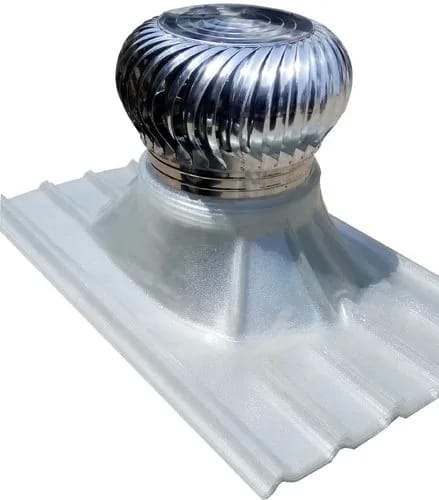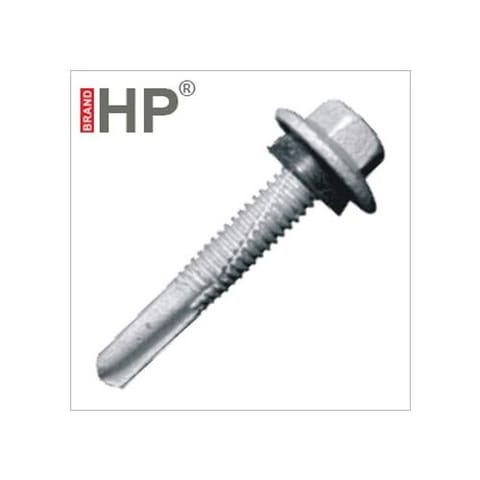A turbo ventilator, also known as a turbine ventilator or a whirlybird, is a type of passive ventilation device used in buildings and industrial settings to improve air circulation and reduce heat buildup.
For Whatsapp Enquiry:
Here's a description of its features and how it works:
Design: Turbo ventilators typically consist of a cylindrical body with a series of vanes or blades arranged in a spiral or helical pattern. The design allows them to capture wind energy from any direction and convert it into rotational motion.
Material: They are commonly constructed from lightweight and durable materials such as aluminum or galvanized steel. This ensures longevity and resistance to corrosion.
Operation: As wind blows over the turbine, it creates a pressure difference between the inside and outside of the ventilator. This pressure difference causes the air inside the building or structure to be drawn out through the turbine, effectively ventilating the space. This process is continuous and does not require any external power source, hence the term "passive ventilation."
Benefits:
- Heat Reduction: Turbo ventilators are particularly effective at reducing heat buildup in enclosed spaces by facilitating the exchange of hot air with cooler outdoor air.
- Moisture Control: They help in controlling moisture levels by expelling humid air and preventing condensation buildup.
- Energy Efficiency: Since they operate solely on wind energy, turbo ventilators do not consume electricity, making them environmentally friendly and cost-effective.
- Improved Air Quality: By continuously venting out stale air and odors, turbo ventilators contribute to maintaining a healthier indoor environment.
Applications: Turbo ventilators find applications in various settings, including industrial facilities, warehouses, workshops, agricultural buildings, commercial spaces, and residential buildings.
Installation: Installation of turbo ventilators typically involves mounting them on the roof or wall of a building. They are designed to withstand harsh weather conditions and require minimal maintenance.
Overall, turbo ventilators provide a simple and efficient solution for enhancing ventilation and indoor air quality in different environments while also promoting energy conservation.
SKU-7UGH1SVRJXQ- Home
- Roofing Products
- Roofing Accessories
- Turbo Ventilator Fan with Polycarbonate Base Plate
Turbo Ventilator Fan with Polycarbonate Base Plate
SIZE GUIDE
Your enquiry has been sent
Product Enquiry Form
Leave us a message for futher information.
Description of product
A turbo ventilator, also known as a turbine ventilator or a whirlybird, is a type of passive ventilation device used in buildings and industrial settings to improve air circulation and reduce heat buildup.
For Whatsapp Enquiry:
Here's a description of its features and how it works:
Design: Turbo ventilators typically consist of a cylindrical body with a series of vanes or blades arranged in a spiral or helical pattern. The design allows them to capture wind energy from any direction and convert it into rotational motion.
Material: They are commonly constructed from lightweight and durable materials such as aluminum or galvanized steel. This ensures longevity and resistance to corrosion.
Operation: As wind blows over the turbine, it creates a pressure difference between the inside and outside of the ventilator. This pressure difference causes the air inside the building or structure to be drawn out through the turbine, effectively ventilating the space. This process is continuous and does not require any external power source, hence the term "passive ventilation."
Benefits:
- Heat Reduction: Turbo ventilators are particularly effective at reducing heat buildup in enclosed spaces by facilitating the exchange of hot air with cooler outdoor air.
- Moisture Control: They help in controlling moisture levels by expelling humid air and preventing condensation buildup.
- Energy Efficiency: Since they operate solely on wind energy, turbo ventilators do not consume electricity, making them environmentally friendly and cost-effective.
- Improved Air Quality: By continuously venting out stale air and odors, turbo ventilators contribute to maintaining a healthier indoor environment.
Applications: Turbo ventilators find applications in various settings, including industrial facilities, warehouses, workshops, agricultural buildings, commercial spaces, and residential buildings.
Installation: Installation of turbo ventilators typically involves mounting them on the roof or wall of a building. They are designed to withstand harsh weather conditions and require minimal maintenance.
Overall, turbo ventilators provide a simple and efficient solution for enhancing ventilation and indoor air quality in different environments while also promoting energy conservation.
Related products
User reviews
ARCSLOT is a one stop solution for all your construction needs. ARCSLOT is the only place where you can explore wide range of Construction material, Various Construction Job services and Design services. ARCSLOT gives you reliable, transparent, tangible and trustworthy solutions for all your construction, interiors, Infrastructure and Mechanical related sectors.
arcslot
26-25-19, GSN Sastry Road, Near Vizag Port, Visakhapatnam.
VISAKHAPATNAM
Andhra Pradesh 530002
IN


